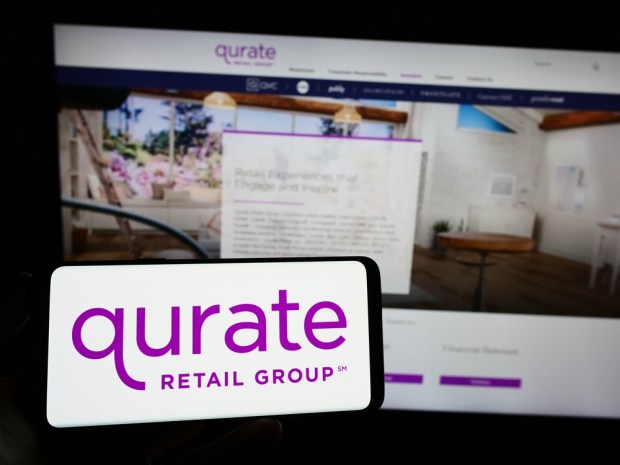HSN and QVC Go Back to Their Livestream Roots to Boost Market Share

When was the last time you scrolled past or even watched HSN or QVC? If you’ve ever watched even a few minutes of a stream, you’d know how addicting it can quickly become. That’s a feeling livestreams are looking to capitalize on.
The concept of live, televised shopping was originally pioneered by HSN and QVC, providing customers with real-time product demonstrations and the ability to make purchases on the spot. Initially favored by consumers age 35 to 64, this interactive shopping format has now garnered interest among a younger audience, particularly during the pandemic. The rise in popularity can be attributed to social media platforms like Instagram and TikTok, which introduced their own livestream shopping solutions, captivating a much younger demographic.
As an illustration, Bloomingdale’s took advantage of the pandemic by hosting more than 50 livestream shopping events, enabling it to maintain connections with customers who couldn’t physically visit its stores. These streams featured makeup tutorials, cooking classes, fitness sessions, and discussions on sustainability within the fashion industry.
Since then, however, a lot has happened in livestreaming. In fact, the U.S. livestream shopping market is projected to reach $31.7 billion by the end of the year.
Capitalizing on the growing momentum of livestream shopping, are the OGs of livestream shopping — QVC and HSN, which have made their return but in a new way.
QVC and HSN Launch on Amazon
Qurate Retail Group has unveiled the launch of QVC and HSN linear channels on Amazon Freevee, a streaming video service.
Through the offering, QVC and HSN are set to deliver an array of livestream shopping opportunities to customers, featuring premier brands and product, presented by a mix of celebrities, influencers, and personalities, across about 40 hours each day, spread across both channels.
“By launching our QVC and HSN linear channels on Freevee, we’re bringing these viewers two distinct entertaining and engaging live shopping experiences,” said David Apostolico, SVP platform strategy, development and distribution, vCommerce Ventures at Qurate Retail Group, in a statement. “The Big Dish adds a more focused video shopping experience for culinary fans and foodies.”
However, it’s not only livestream players who aim to expand their market share. Retailers are also seeking to harness the power of livestreams but with a focus on getting their flagship brands to take charge.
Ulta Beauty’s Opportunities for Brands
Ulta Beauty has also ventured into this domain, but with a different opportunity. Ulta is allowing brands within its portfolio to host live shopping experiences directly on the retailer’s website. Cosmetics, in particular, was the pioneer to embrace this opportunity, commencing its live events on June 29.
Through the partnership, brands can now access an avenue to connect with Ulta’s customer base, opening up possibilities for product discovery and brand exposure.
“We believe live shopping is an exciting touchpoint to engage beauty enthusiasts in meaningful, actionable ways,” said Agustina Sartori, senior director of digital innovation at Ulta Beauty, in a statement. “Having found success with Buywith during the holiday season, it was a natural next step to experiment further and bring our brand partners into the programming where appropriate. We are excited to test, learn and optimize in yet another touchpoint where beauty lovers are actively browsing.”
But this isn’t the first time Ulta Beauty ventured into livestream. The retailer has hosted sessions on a variety of topics, including “Gifts at Every Price Point” hosted by influencer Amy Chang and “Holiday Travel Must-Haves” featuring Julissa Prado, the founder of hair care brand Rizos Curls.
Lessons come from the experiences of beauty brands like Item Beauty and Selfless by Hyram, both founded by TikTok stars like Addison Rae, who gained popularity during the pandemic but was dropped from Sephora: Just because a brand has earned a spot on the shelf at a big-box retailer doesn’t mean their work is done.
Jeffrey Ten, the president of Global Indie Brand Development, pointed out that Sephora acts as a retailer, and its role is to provide a selling platform for brands, while the onus of brand development lies squarely with the brand owners themselves.
Leveraging Influencers in Livestream
Since brands are already leveraging retailers to drive sales through retail media networks, they ought to consider (if they haven’t already) influencers for this opportunity.
A new report from the creator-guided shopping platform, LTK, reveals that 92% of Gen Z women acknowledge the influence of online creators on their beauty or wellness routines. The report highlights that among Gen Z women, 78% consider creators their most trusted source for beauty recommendations, while among millennial women, this figure stands at 61%.
“As more people turn to creators as a trusted source on beauty and personal care products, advice and inspiration, creators have become the best way for brands to reach their customers in an authentic and impactful way,” said Ally Anderson, director of strategy and insights at LTK. “Brands that lean into the authenticity and trust creators have built with their communities are winning across an array of metrics that are leading to meaningful business growth.”
